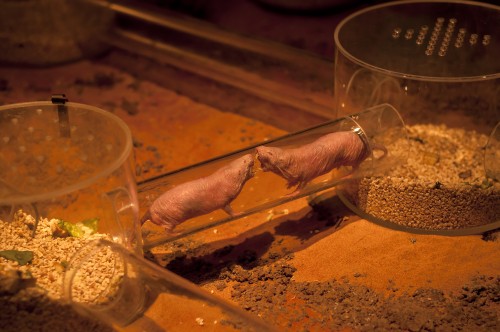In addition to losing the traits of aggression, fear and the tendency to flee when in danger, the laboratory mice were bred so that the females would immediately mate with any male that appears in their environment, including siblings and parents

In addition to losing the traits of aggression, fear and the tendency to flee when in danger, the laboratory mice were bred so that the females would immediately mate with any male that appears in their environment, including siblings and parents. In other words, they lost the selectivity feature, which was originally intended to allow them to choose the partner whose characteristics "guarantee" better genes and higher chances of survival for their joint offspring. At the same time, their willingness to take care of foreign puppies (even if they are not their mothers) was nurtured in them. The mice chosen to continue cultivating the laboratory strains are also characterized by the fact that they are not picky about the food served to them, and compared to the wild mice, they grow faster and reach sexual maturity faster. Thus, mice were created that are larger, less aggressive, breed at a younger age, and are not picky about choosing their partners. In other words, it is a completely different species from the mouse species living in the wild in a variety of structural, physiological and behavioral features.
Dr. Tali Kimchi, from the Department of Neurobiology at the Weizmann Institute of Science, realized that the strains of laboratory mice are not suitable for some of her research questions, which focus on the genetic and neural roots of social behavior, including reproductive and mothering customs (for example, the aggression of mothers towards foreign puppies, and the role of scents - pheromones - in mate selection and care of offspring). . Therefore, she had to develop a unique strain of mice, and return to them the features taken from the normal laboratory mice over generations of breeding and selection, while preserving the possibility of using laboratory tools used in genetic engineering, such as the creation of mutant strains (a strain in which, during development, a genetic mutation is introduced that impairs its activity of a particular gene).
In a process of hybridization between a laboratory mouse with a genetic mutation in the gene responsible for absorbing pheromones, and wild mice, which was carried out for about ten generations, the members of Dr. Kimchi's research group created a new and unique strain of mice, which received back all the characteristics of the wild mice, in all that was said in terms of behavior , in the structure of the body, in hormones, in various biological processes, and of course, in the genetic load. Thus, for example, the new strain of mice began to exhibit a series of traits that disappeared in the laboratory mice, such as behaviors related to anxiety and flight in times of danger, as well as aggressive behavior between females. Another important feature brought back to the new breed is related to behavior towards puppies. Naive wild mice (that have not yet mated and are not mothers) do not usually adopt foreign pups that come their way; In contrast, naïve laboratory mice adopt foreign pups. Females of the new breed were aggressive towards foreign puppies, as well as among themselves - just like wild mice.
